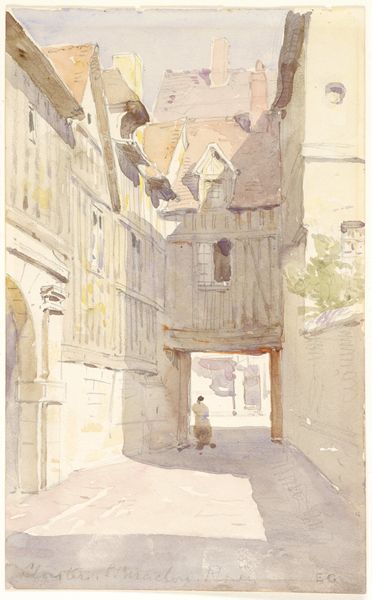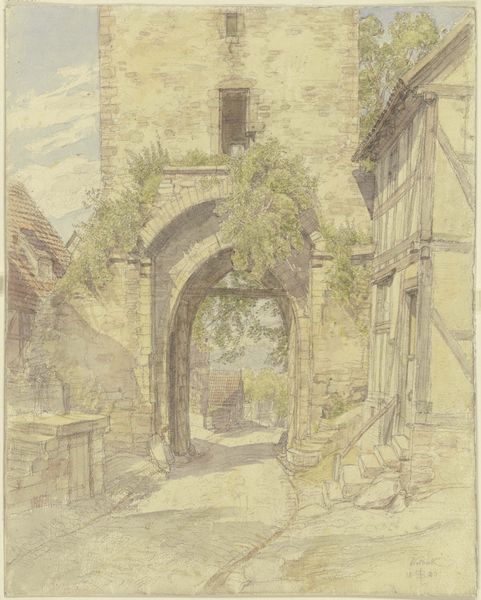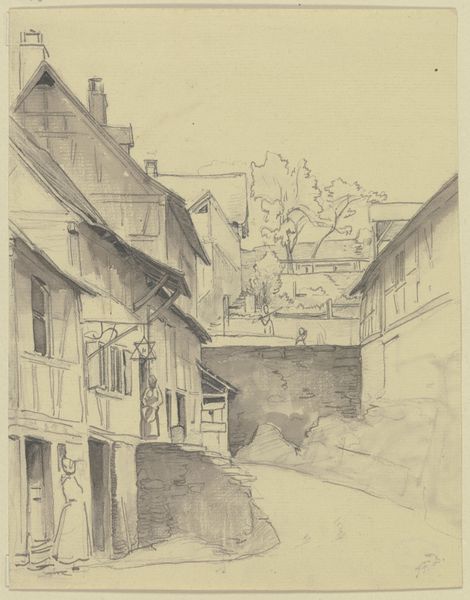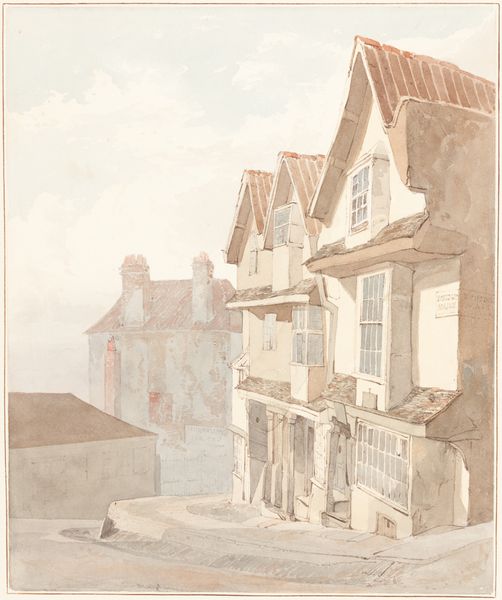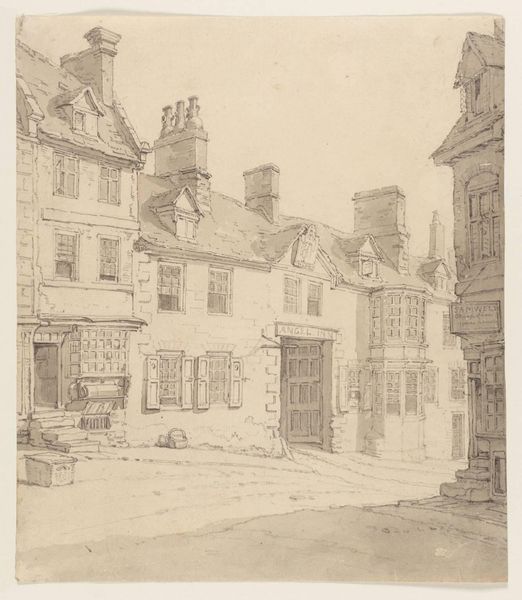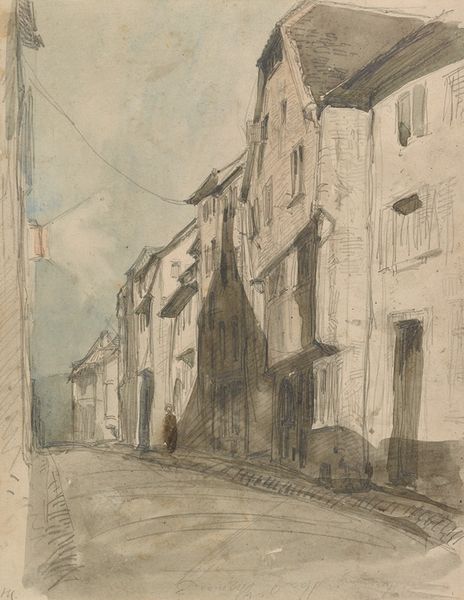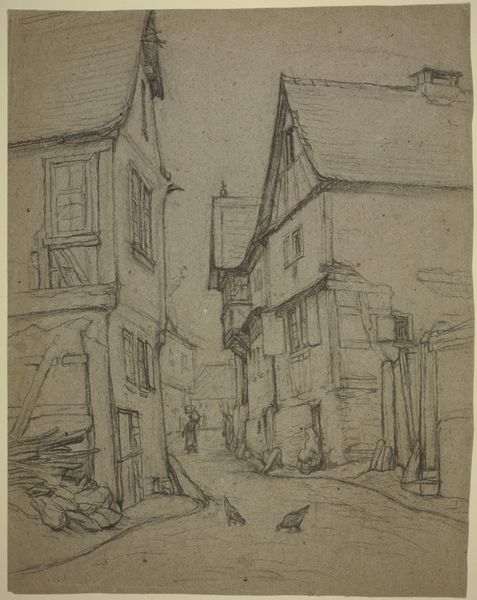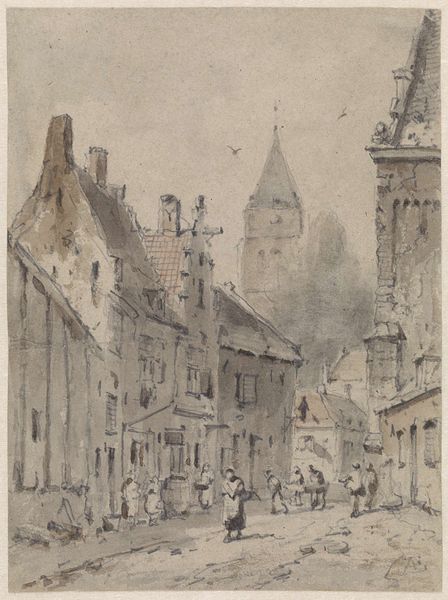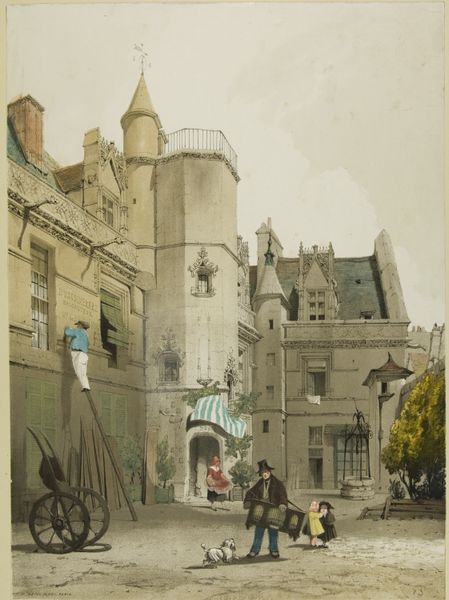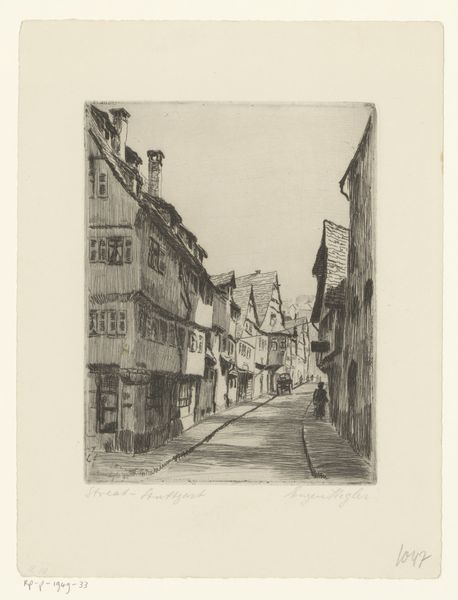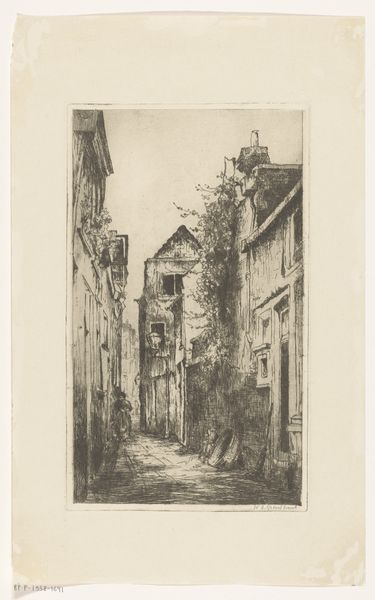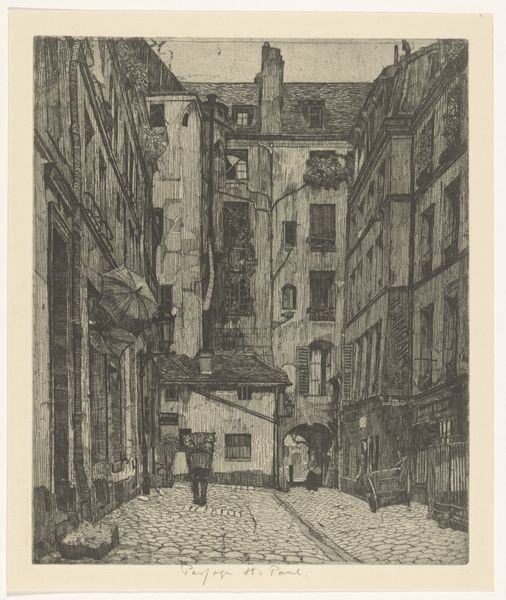
drawing, paper, watercolor, architecture
#
drawing
#
paper
#
watercolor
#
romanticism
#
cityscape
#
watercolor
#
architecture
Copyright: Public Domain
Curator: This delicate watercolor and ink drawing, rendered on paper, depicts "Die Roßschwemme am Viktualienmarkt in München"—the horse pond at the Viktualienmarkt in Munich. It was created in 1829 by Carl Werner. Editor: There's a melancholy about this image. The subdued palette, all browns and greys, combined with the depiction of utilitarian architecture, evokes a certain wistful feeling. It reminds me of early industrial landscapes, before the Romantics fully embraced sublime nature. Curator: It's interesting you pick up on that. The architecture, heavy with its historical connotations, communicates much about the continuity of Munich itself. Look at the buildings, they possess an inherent dignity, yet also bear signs of organic change over long duration, their many windows marking years passing, human presences fading but remaining nonetheless. Editor: The presence of the water, reflecting the buildings, creates a doubling effect. It visually mirrors the established order of things, that, in turn, creates space to reflect on societal stability versus the constant churning, changing conditions for the citizens of this period, dealing with very complex issues. Curator: Water, you see, carries significant symbolic weight—cleansing, renewal, but also chaos and the subconscious. And to witness that image reflected so directly, it invites contemplation on the city’s relationship with its history and itself. We might also consider what it means that this site specifically catered to horses; it served as a vital service point to animals that allowed society to thrive, literally mirroring it with their efforts. Editor: And within the broader narrative of Romanticism, that deliberate mirroring perhaps signals an underlying critique. Maybe Werner implicitly critiques the way industrial progress and city life have exploited labor. It prompts the question of how the rise of a marketplace reshapes notions of animal use and freedom itself, and more pointedly for humans as well. Curator: Perhaps, but equally possible, it points to an almost elegiac vision, appreciating the enduring, material structures and the persistent continuity within an urban landscape as an integral facet of Munich's story. For myself, I think this art has opened an inquiry, showing there’s really nothing new about progress and people just keep adapting. Editor: Absolutely, and it's in navigating those layered possibilities—acknowledging the historical context and contemplating the potential implications—that the artwork really speaks. It reminds us to always seek the unwritten histories that flow beneath the surface.
Comments
No comments
Be the first to comment and join the conversation on the ultimate creative platform.
